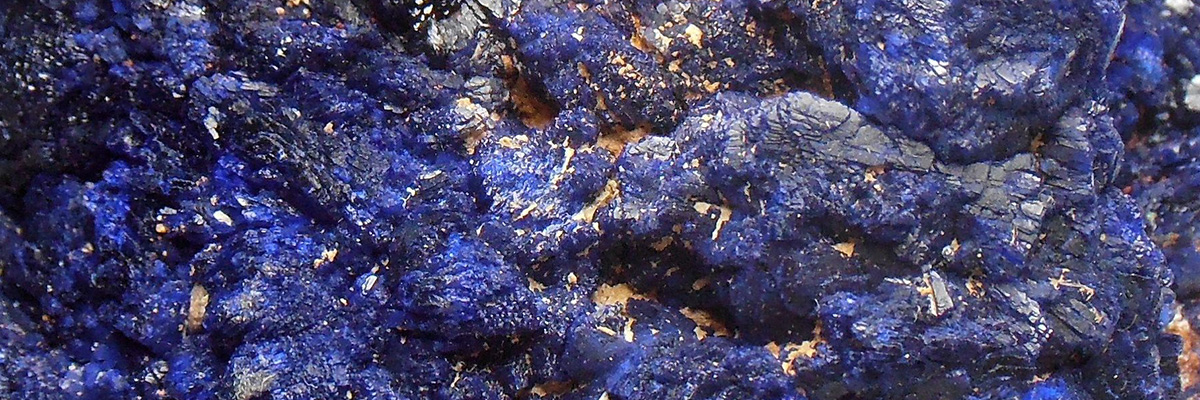Azurite is a striking blue copper carbonate mineral belonging to the carbonate class, specifically within the monoclinic crystal system. Known for its vivid blue color and vitreous to earthy luster, azurite typically forms prismatic, tabular, or massive aggregates. This captivating mineral is often found alongside other copper minerals, such as malachite and chrysocolla, and can display vibrant color variations due to impurities or weathering.
Usage
Historically, azurite has been used as a natural pigment, particularly during the Renaissance period, to create deep blue hues in paintings and other works of art. Today, azurite is primarily valued as a collector’s mineral, and its eye-catching color and attractive crystal formations make it a popular choice for decorative items and ornaments. The mineral is also used for copper ore, albeit less commonly than other copper minerals such as chalcopyrite and malachite.
Gemstone
Although azurite is not traditionally considered a gemstone due to its relative softness and sensitivity to light, its striking blue color and unique crystal formations have led to its use in ornamental and lapidary applications. Care must be taken when incorporating azurite into jewelry or decorative items, as it can be prone to scratching and may lose its color over time when exposed to sunlight.
Origin
Azurite forms through the weathering and oxidation of copper-bearing minerals and rocks in near-surface environments. As water percolates through copper-rich deposits, it reacts with the minerals present, leading to the formation of secondary copper minerals such as azurite. The mineral can also form directly from the precipitation of copper-rich solutions in limestone or dolomite.
Occurrence
Azurite is commonly found in copper deposits worldwide, with significant occurrences in locations such as Arizona and New Mexico in the United States, Bisbee in Mexico, Tsumeb in Namibia, and Chessy in France. The mineral is often associated with other copper minerals and may form beautiful combinations with green malachite, creating visually stunning specimens.
Metaphysical
In metaphysical and spiritual practices, azurite is believed to possess a range of properties related to enhancing intuition, spiritual growth, and communication. The mineral is said to help individuals connect with their inner wisdom, promoting clarity of thought and self-awareness. Azurite is also considered a stone of transformation, helping to release old patterns and beliefs, and encouraging personal growth and emotional healing.
| Class | Carbonates |
| Formula | Cu3(CO3)2(OH)2 |
| Luster | Vitreous to earthy |
| Hardness (Mohs) | 3.5 – 4 |
| Streak | Light blue |
| Color | Azure blue, dark blue, pale blue |
| Cleavage | Good in one direction, fair in another |
| Specific Gravity | 3.77 – 3.89 |


